Last updated on February 15, 2024
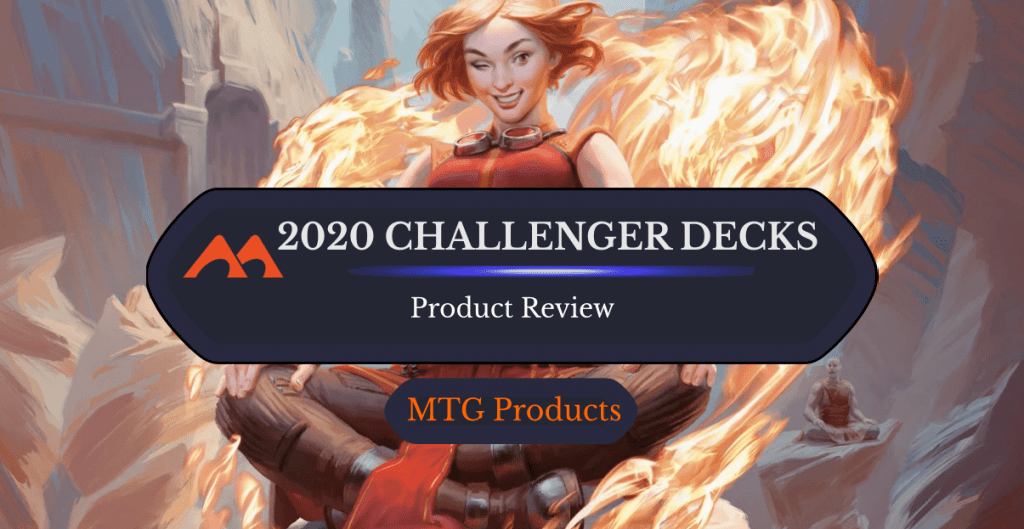
Editor's note: Looking for the latest Challenger Decks? Check out our article about the 2021 Challenger Decks here.
WotC has been publishing Challenger Decks for competitive Constructed games since 2018 and, as always, players wonder whether they’re actually good or just trash decks marketed with a fancy name. There are four 2020 MTG Challenger Decks, and it can be difficult to choose which one is suitable for your style or if they’ll be useful in the long run.
So, since I’m a magnanimous man, I figured that I had too many wildcards laying around and decided to craft each of these decks, test them in MTG Arena, and then analyze their weaknesses, strengths, and overall competitive edge. Since the decks were released on March 27, I didn’t have the pleasure of using the paper versions to test them out. Maybe next time.
What Are Challenger Decks?

Kenrith, the Returned King | Illustration by Kieran Yanner
Challenger decks are preconstructed decks that are released every year after Standard rotation. They’re meant to be starting decks for new players as well as reference points for more experienced players to improve their decks.
The first set of Challenger Decks was released in 2018 to replace Duel Decks, and we’ve gotten four new ones each year since. Each deck comes with a 60-card main deck and a 15-card sideboard. They’re always Standard-legal (barring bannings), so you don’t need to worry about if you’ll be able to use them right away.
They also include several rare cards plus one mythic rare and are designed to be strong on their own merit. Just like previous event deck products, the Challenger Decks are made for competitive play. However, not all of them are equal in power or value, and it really shows when you start using them in matches. So, without further ado, let’s talk about 2020’s batch.
The 2020 Challenger Deck Series

Interplanar Beacon | Illustration by Adam Paquette
As I mentioned, I crafted each of these decks in Arena with Wildcards—let me tell you, it did not feel good watching my precious Wildcards I’d hoarded for so long get all used up—and jumped right into Standard ranked. I played three BO3 games and 10 BO1 games with each deck to test them out. I also tried each in different ranks to see if they performed the same at different competitive levels.
You should keep in mind that results will differ in MTG Arena versus paper Magic since it’s easy to counter these decks in Arena, but things change in real life. But that’s enough talk; let’s jump right in!
Cavalcade Charge

I don’t know if I mentioned this before, but I don’t like mono red decks. Not because they’re weak, but because I feel like I’m losing a part of my humanity whenever I play them. After all, look at this nonsense:
Planeswalkers (3)
Creatures (27)
Bonecrusher Giant x4
Fervent Champion x4
Runaway Steam-Kin x4
Torbran, Thane of Red Fell x4
Rimrock Knight x4
Scorch Spitter x4
Tin Street Dodger x3
Spells (4)
Artifacts (1)
Enchantments (4)
Lands (21)
Castle Embereth x3
Mountain x18
Sideboard (15)
Experimental Frenzy x3
Shock x4
Tibalt, Rakish Instigator x2
Satyr's Cunning x3
Slaying Fire x3
Let’s Break it Down

Tibalt, Rakish Instigator | Illustration by Chase Stone
Cavalcade Charge is a bona-fide aggressive rush deck. As the name suggests, the aim of the deck is to literally charge your opponent. Cavalcade of Calamity is your key card here, since you need to slap it down as soon as possible to finish off your opponent before they can get some control over the board. One of the greatest strengths of this deck is the fact that it’s an almost-complete competitive deck.
Even if you don’t add anything, Cavalcade Charge can easily be considered a budget competitive deck. All you need is one lucky draw and your opponent pretty much has no chance to recover from your heavy damage. Since you can also prevent them from gaining more life with Tibalt, this is a very lethal deck.
However, it has some equally significant flaws. You’re very vulnerable to board wipes; one Deafening Clarion can destroy all your creatures. Or if your opponent manages to drop some decent midrange creatures on the board, you’re also pretty much done.
Then there’s the possibility that you get a bad draw and fail to take control of the board by turn 4. Your opponent will probably get a chance to set their defenses and it’s incredibly challenging to breach them after that. Your Tin Street Dodgers along with a bonus from Castle Embereth can still pack a strong punch, but they’re easy to remove.
Although the deck has Torbran to give you a chance to hit harder, your creatures still have pitiful toughness overall. You also have limited removal spells yourself—four Shocks and three Slaying Fires in your sideboard, as if it couldn’t get any worse—so you can easily be countered if you let your opponent catch their breath.
When it comes to Cavalcade Charge’s performance, it works worst in BO3 games but great if you’re playing Standard BO1. The reason is obvious: once your opponent knows what you’re up to, all they need to do is bring the heavier guns from their sideboard to the next round. But your opponent usually dies before they can even react in BO1.
This works better in lower ranks, especially Bronze to Silver, because players at these ranks usually don’t include reliable removal spells in their decks. As you get higher up, you’ll notice most players have a couple of nukes in their arsenal that can easily take you down. This is really the only deck that’s got an advantage in BO1, as the rest can hold their own in Traditional without needing to worry about getting totally countered.
Making the Deck Better
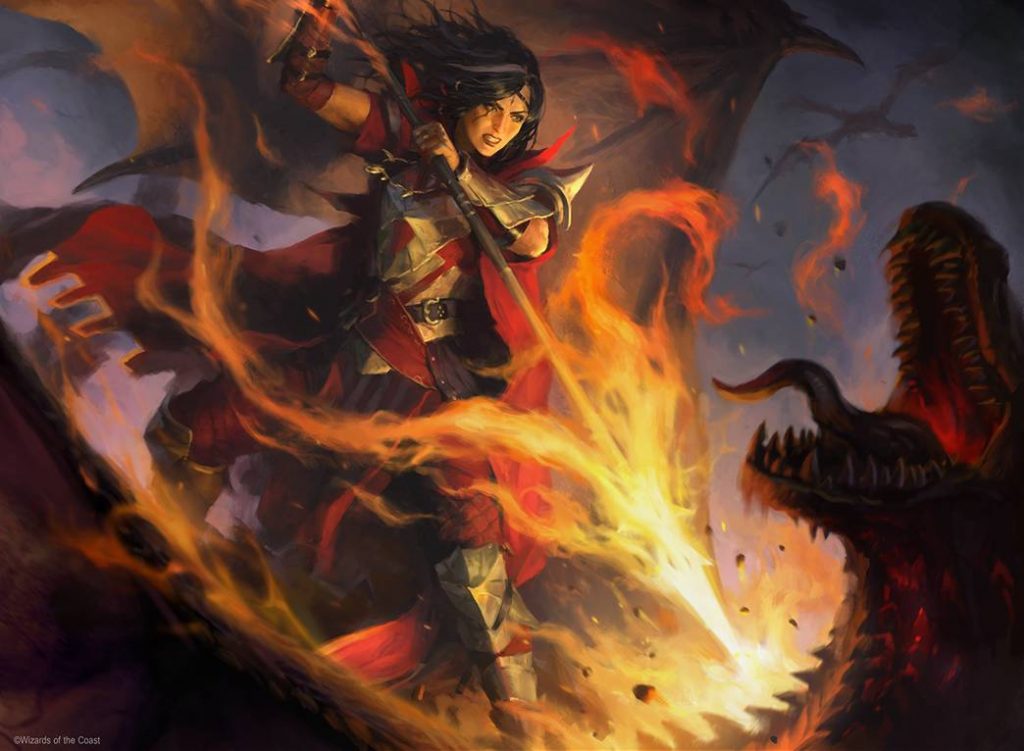
Slaying Fire | Illustration by Heonhwa Choe
To turn Cavalcade Charge into a more stable deck, you’ve really only got one option. You could keep relying on Cavalcade of Calamity and 1-power creatures, or you could dismiss the whole thing and add a different win condition to better your chances.
Seth Manfield pulled this off in the Magic World Championship XXVII with an incredibly respectful third place by adding Anax, Hardened in the Forge to the mix. This adds some protection from board wipes along with being a pretty good card in its own right.
You also don’t need Experimental Frenzy and can replace the three copies with some Grim Initiates to have a better presence on the battlefield. Unchained Berserker is a solid upgrade since it’s got protection from white, plus it’s super cheap and efficient. You can also try Scampering Scorcher to add two 1/1 tokens that are ready to attack as soon as they land.
These changes won’t cost you too much and would turn Cavalcade Charge into a solid, budget-friendly competitive deck. If you take a look at Seth Manfield’s deck, you can see that it isn’t that far off from this Challenger deck. Robber of the Rich is a great (though somewhat pricey) addition but, combined with Embercleave, it practically pays for itself. Manfield doesn’t use Cavalcade of Calamity as he relies on the Robber, Bonecrusher Giant, and buffed-up Runaway Steam-Kins instead.
Verdict

Fervent Champion | Illustration by Steve Argyle]
Cavalcade Charge is great mono red deck that’s ready for you to start playing with right away. It’s relatively cheap to upgrade and can be very tough to compete against, though it is vulnerable to board wipes, so you need to play it fast and decisive. There won’t be many paper players who can successfully defend against your initial rush, but MTG Arena has seen enough mono red aggro decks that lots of players on the digital platform can manage to outmaneuver it when they need to.
Most of the cards in this deck will remain legal when the next Standard rotation comes around but its pride and joy, Cavalcade of Calamity, won’t be one of them. Since you’ll only need to change 1-power creatures in this deck, it’s still a good investment. Embercleave is a great card to have along with some good value rares like Torbran, Bonecrusher Giant, and Fervent Champion, which will all remain Standard-legal after the next rotation.
Final Adventure

Since we covered that shameless mono red deck, we can talk about Final Adventure now. This is more fun to play, if you ask me. The whole deck revolves around cards with adventure and has potential for great comebacks. Take a look for yourself:
Planeswalker (1)
Creatures (28)
Edgewall Innkeeper x4
Blacklance Paragon x2
Knight of the Ebon Legion x2
Lovestruck Beast x4
Midnight Reaper x2
Murderous Rider x2
Foulmire Knight x4
Order of Midnight x4
Smitten Swordmaster x4
Spells (2)
Find // Finality x2
Instants (2)
Disfigure x2
Artifacts (4)
Lucky Clover x4
Lands (23)
Castle Locthwain x2
Fabled Passage
Temple of Malady x2
Jungle Hollow x3
Forest x7
Swamp x8
Sideboard (15)
Massacre Girl x2
Duress x4
Noxious Grasp x4
Cling to Dust
Kraul Harpooner x2
Thrashing Brontodon x2
Let’s Break it Down
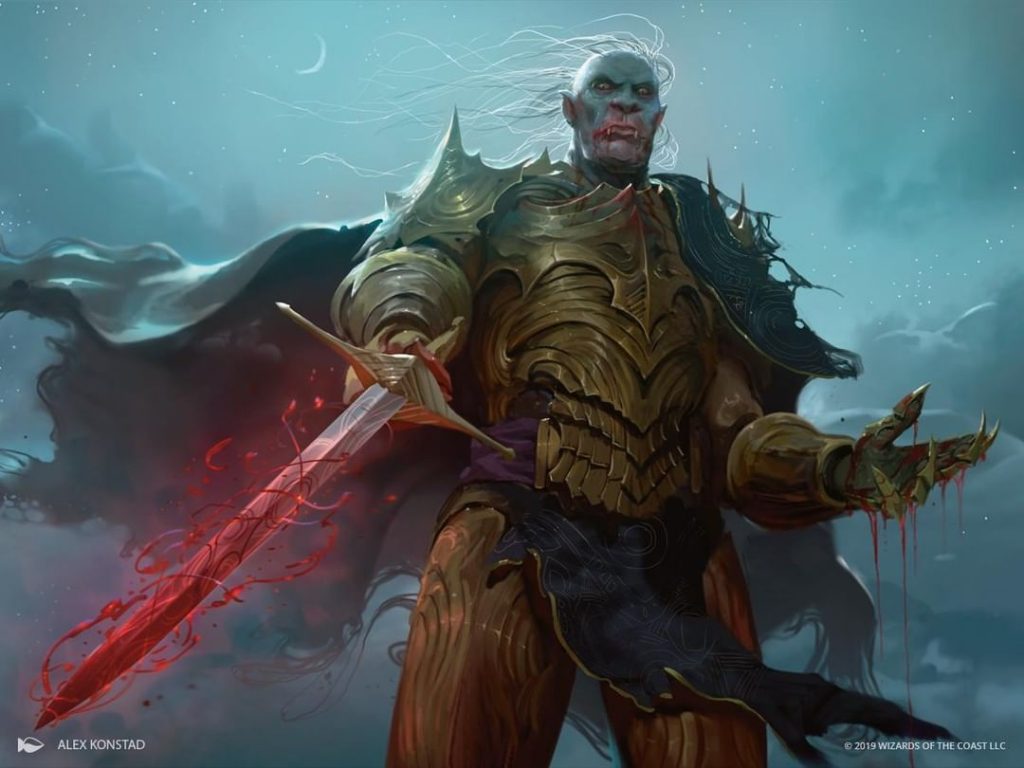
Knight of the Ebon Legion | Illustration by Alex Konstad
Lucky Clover and Edgewall Innkeeper are the two cards which will help you snowball the game. You can draw a lot since most of your deck consists of adventure creatures, and you can multiply their effects with Lucky Clover which will occasionally see you one-shot your opponent. The deck also has Vraska, which just gives you another win condition.
Final Adventure is a powerful midrange deck where, even if you don’t get a lucky draw, you’ll be able to hold your ground. Thanks to our Innkeeper and Foulmire Knight, you can draw while pressuring your opponent. Knight of the Ebon Legion is also a terrifying card since it can quickly become a powerhouse.
Final Adventure doesn’t have an apparent weakness but falls down if your opponent has the means to target your Lucky Clovers. Your creatures are already strong by themselves, though, so you can still win by constantly attacking. You’ve also got the means to revive fallen soldiers, so there’s no need to worry too much about losing them to blockers.
If your opponent has a strong early game and notices that stopping your card draw is important, keeping your Innkeepers alive might become a problem. You do have some removals for troublesome creatures and three possible board wipes so, all in all, this is a well-rounded deck.
It’s pretty difficult for your opponents to counter all aspects of Final Adventure, but if you fail to get a couple of draws and establish control over the board, you might run into some trouble against both mono-colored aggro decks and late-game control decks. You don’t have many heavy-hitters other than Lovestruck Beast, so you’ll also have trouble against decks based around lifelink mechanics. However, these are all relatively small challenges. Final Adventure does well in both BO3 and BO1 games since your sideboard is pretty decent and the deck isn’t as easily foiled as mono red aggro.
Making the Deck Better
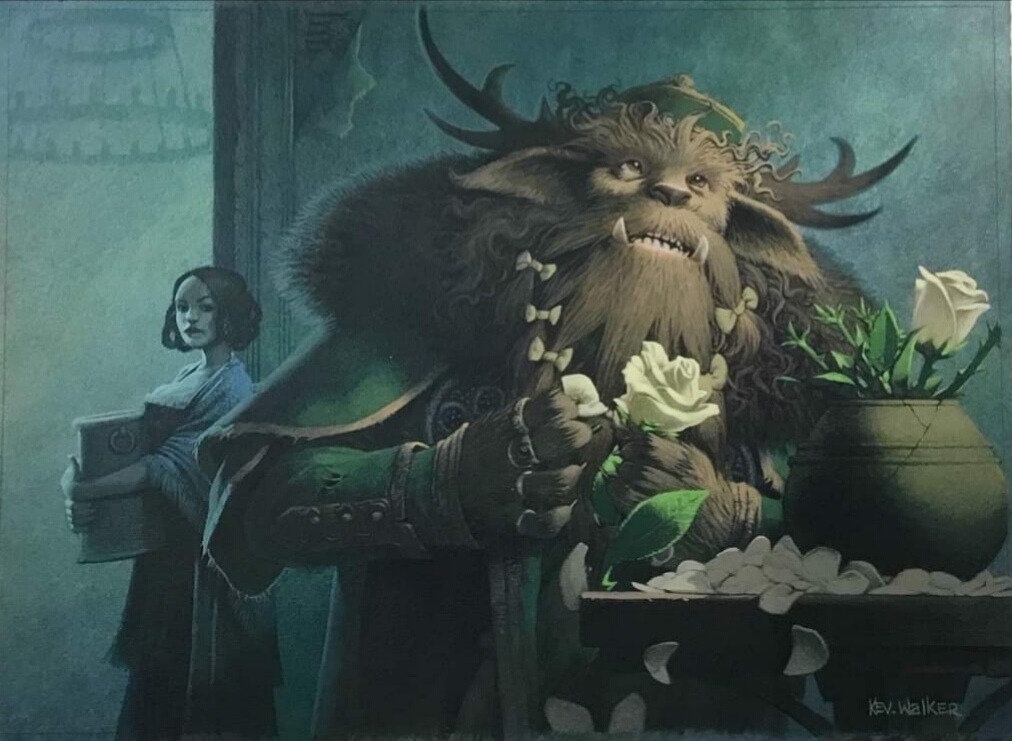
Lovestruck Beast | Illustration by Kev Walker
Although I said Final Adventure is a well-rounded deck, it doesn’t mean we can’t make it better.
Disfigure can be underwhelming sometimes so swapping it out with some direct removals like straight-up Murder or even Drag to the Underworld would be a good boost. Blacklance Paragon is also too situational in my opinion. Adding a Questing Beast or Oathsworn Knight in the Paragon’s place may be a better idea for offence and defense. You can throw in some Overgrown Tombs for a more reliable mana base in place of one or two Lovestruck Beasts. Casualties of War is also a powerful card that would fit great in this deck.
Although it’s more expensive to upgrade than Cavalcade Charge, Final Adventure would be a better deck overall after some improvements. There are various adventure-themed decks out there so it’s difficult to choose just one as a reference, but this is a successful example.
Verdict
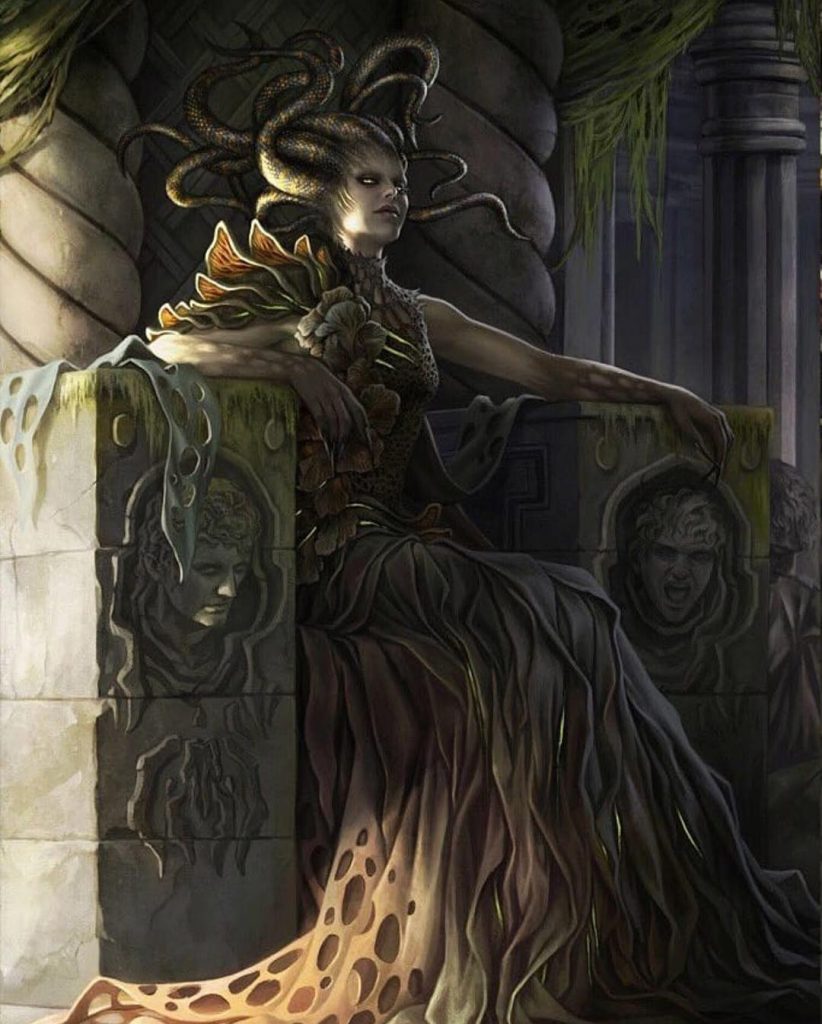
Vraska, Golgari Queen | Illustration by Magali Villeneuve
Definitely the safest choice among the Challenger Decks. With a solid early game and great midrange, you can easily play competitive with this one. Curry Favor and Lucky Clover make a great combo and can one-shot your opponent or save you from the brink of death.
Most of the cards in Final Adventure will remain legal come the next rotation since the adventure mechanics were introduced in 2019’s rotation set, Throne of Eldraine, but there are no plans to make additional adventure cards in future as far as we know. This’ll hurt the deck’s theme and upgrade-ability in the future. Considering the deck’s cards are useful by themselves, though, this shouldn’t be too much of a problem.
Knight of the Ebon Legion, Massacre Girl, and Vraska, Golgari Queen won’t be legal come 2020’s Standard rotation, but you can use them throughout the year until then and then save for other formats since these cards are pretty strong in the current meta and can carry you far. You’ll also see how powerful Murderous Rider is as you play with this deck. Oh, and the cards in Final Adventure can easily be re-purposed into a Simic or Rakdos deck.
Flash of Ferocity
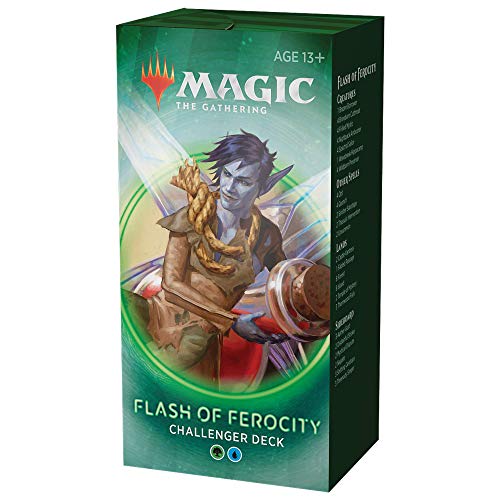
Do you like having control when playing MTG? If so, then this is the deck you’re looking for. In my opinion, this is the best Challenger deck of 2020. Here’s what we’re looking at:
Creatures (22)
Brazen Borrower
Nightpack Ambusher x4
Wavebreak Hippocamp
Wildborn Preserver x4
Brineborn Cutthroat x4
Frilled Mystic x4
Spectral Sailor x4
Instants (14)
Thassa's Intervention x2
Opt x4
Quench x4
Sinister Sabotage x2
Unsummon x2
Lands (24)
Castle Vantress x2
Fabled Passage
Temple of Mystery x2
Thornwood Falls x3
Forest x8
Island x8
Sideboard (15)
Shifting Ceratops x3
Disdainful Stroke x2
Negate x2
Aether Gust x3
Mystical Dispute x2
Threnody Singer x3
Let’s Break it Down

Sinister Sabotage | Illustration by Mathias Kollros
Flash of Ferocity has got an insane amount of counter spells so you could potentially win the game by frustrating your opponent into a concede or misplay. Brineborn Cutthroat and Wildborn Preserver easily get buffed up and you can actually keep them alive and well on the battlefield since you’ve got a lot of counters. Meanwhile, dropping Nightpack Ambusher after you establish control will passively win the game since you can focus on countering your opponent’s spells and attacks while generating 2/2 tokens every turn.
However, aside from countering, your only removals are Aether Gust and Brazen Borrower. Even though these two are some of the most powerful cards in competitive play lately, you might have trouble if you let your opponent cast spells freely and end up losing control of the board. This is in no way a beginner deck since you need to be strategic to make the most of your counterspells.
The most trouble I had while playing this one was against early-game decks, which drop a lot of creatures before you can establish your mana base. Flash of Ferocity has no kill-switch mass- or single-target removals, so losing control of the board early means defeat most of the time. Shifting Ceratops comes in handy when you need a heavy hitter right of the bat but is also very situational. All your spells are instants and most of your creatures have flash, so you need to pay attention to your mana-base or you won’t be able to act during your opponent’s turn.
Making the Deck Better

Wavebreak Hippocamp | Illustration by Caio Monteiro
The most important problem you need to fix is the mana issue. Switching out Thornwood Falls for Temple of Mystery can help you scry and avoid any unnecessary stacking of cards when you don’t have enough lands. You can also toss in Paradise Druid or Growth Spiral in place of Threnody Singer to get rid of mana issues.
Wavebreak Hippocamp falls hard after a couple of turns, so using Hydroid Krasis instead might give you the necessary late-game power to finish things. You can also try adding some Breeding Pools to the deck, but keep in mind that they’re somewhat pricey.
If you want to keep the theme, this is pretty much all you can do since Flash of Ferocity is already a powerful budget deck. If this isn’t enough for you, though, Nissa is a good planeswalker to add since she can help you take control of the board more easily during mid-game and quickly wrap up for an early end in your favor. Mass Manipulation can be overkill but is a great card to have on your sideboard if you ask me. There are lots of similar, successful decks like this one, so it’s not hard to see that Flash of Ferocity is a good option.
Verdict
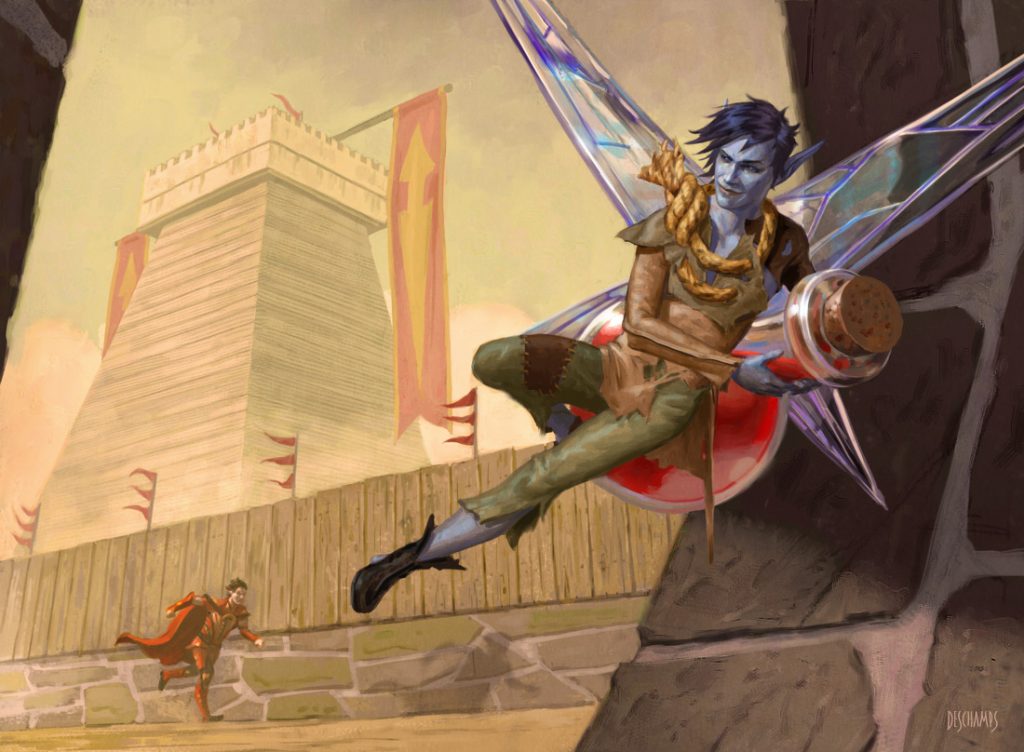
Brazen Borrower | Illustration by Eric Deschamps
If you like playing control decks and fancy longer games, this is a great deck. Both creature- and spell-wise, Flash of Ferocity is competitive and fun to play with. You can deny your opponent’s next draw with Aether Gust if they decide to top the card and keep a counter spell in reserve to remove the threat.
There are some good value rares like Wildborn Preserver and Thassa's Intervention which are extremely powerful. Brazen Borrower is pretty nimble and can easily break your opponent’s plans.
Keep in mind that the Borrower is regarded as one of the most useful cards released in 2020. Since it’s here to stay until 2021, it’s definitely a good investment and Flash of Ferocity is no exception. However, some of the deck’s key cards like Frilled Mystic and Nightpack Ambusher will be rotated out come the end of 2020, so you’ll need to make some changes to keep using it.
Allied Fires
Editor's note: Fires of Invention is now banned in Standard as of June 2020. Keep that in mind if you're planning to buy this deck.

Last but not least, we’ve got a risky play. I’ll say it right now: this is a convoluted deck. Is it fun to play? Yes. Is it difficult? Yes. Do I recommend it? Absolutely, but only if you’re crafting it in MTG Arena. I’m hesitant to recommend it for paper players since Allied Fires is all over the place. It revolves around planeswalkers and the infamous Fires of Invention theme, but it’s difficult to play.
But. It has some great value cards and is a blast to play if you can manage to find your way around it. Here’s what I mean:
Planeswalkers (13)
Sarkhan the Masterless x3
Ugin, the Ineffable
Kasmina, Enigmatic Mentor x3
Narset, Parter of Veils x4
Saheeli, Sublime Artificer x2
Creatures (3)
Kenrith, the Returned King
Fae of Wishes x2
Spells (7)
Deafening Clarion x3
Drawn from Dreams x2
Time Wipe x2
Enchantments (10)
Fires of Invention x4
Banishing Light x2
Omen of the Sea x4
Lands (27)
Steam Vents
Temple of Enlightenment
Temple of Epiphany
Temple of Triumph
Interplanar Beacon x4
Swiftwater Cliffs x3
Tranquil Cove x3
Wind-Scarred Crag x4
Island x5
Mountain x2
Plains x2
Sideboard (15)
Sarkhan the Masterless
Mass Manipulation
Devout Decree x2
Dovin's Veto
Revoke Existence x2
Time Wipe
Ashiok, Dream Render
Dovin, Hand of Control
Fry x2
Thirst for Meaning x3
Let’s Break it Down

Sarkhan the Masterless | Illustration by Kieran Yanner
Allied Fires includes a bunch of planeswalkers, as you can see. They’re all pretty useful and can be used in different decks except for Kasmina, although she may come in handy occasionally. You also have a series of board wipes, counters, removals, exiles, draws, and pretty much anything you can do in MTG, which is both a good and a bad thing. This is an advanced deck and its competitive edge is somewhat risky.
One of the main problems you’ll encounter while playing is the lack of clear win conditions. Sure, you have Sarkhan and can turn all your planeswalkers into dragons, but it’s challenging to stack multiple planeswalkers if your opponent knows what they’re doing. You board wipes are very useful but they’re not infinite, so you need to take control of the game as soon as possible. Fires of Invention can help you with mana issues but also render your instants useless.
Since you only have three creatures—although all three are very strong—if you keep losing your planeswalkers you’re done. No comebacks. An untimely Mass Manipulation can turn your planeswalkers against you, or your whole game can be destroyed in one sweep with The Elderspell. You can also struggle against other control decks since you won’t be able to respond with counters if you’ve got Fires of Invention on the board. You do have a solid sideboard with Dovin and your own Mass Manipulation, though.
Making the Deck Better
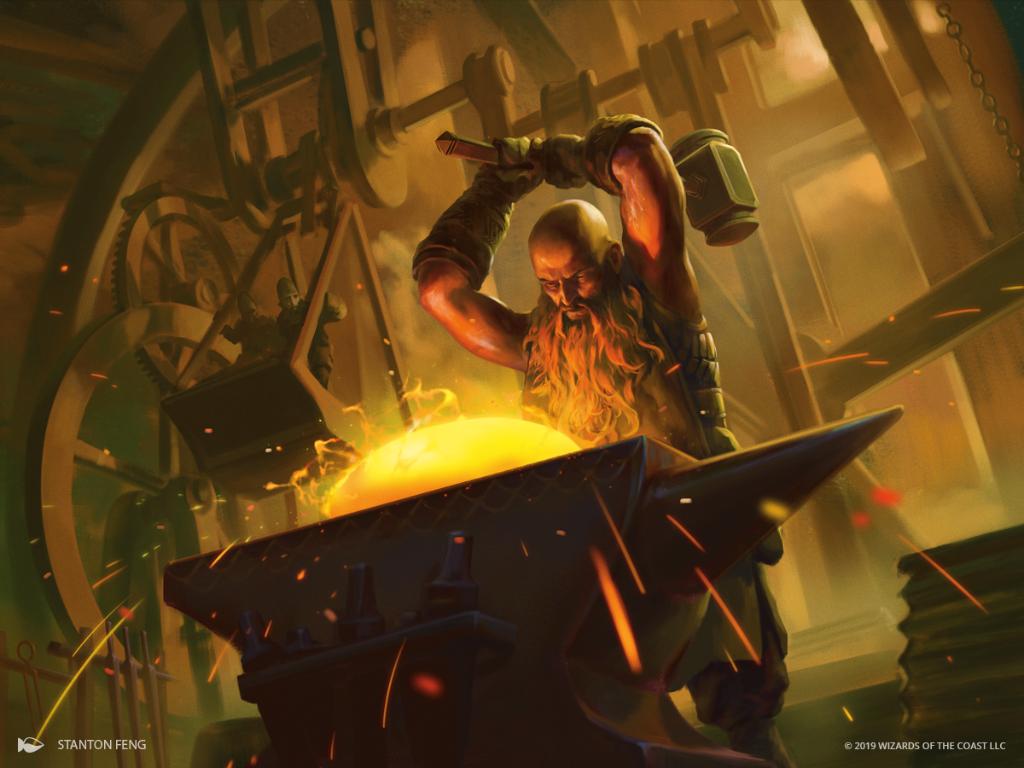
Fires of Invention | Illustration by Stanton Feng
Upgrading this deck is somewhat costly if you want to keep its planeswalkers theme. It lacks Teferi, Time Raveler which can provide you with other win conditions. Since there are just too many decks out there with a similar theme, I’m instead going to talk about the deck I used for testing.
Chandra, Awakened Inferno helps control the board and put a clock on your opponent. I also added Karn, the Great Creator for some synergy with Fae of Wishes and the opportunity to use your sideboard during the game.
If you can add more Temples for scrying power, you won’t need Fires of Invention and can instead invest in more counter spells to make sure your planeswalkers survive. I also don’t use Devout Decree and replaced it with Emergency Powers since Narset will prevent your opponent from drawing.
The deck gets a significant boost just by adding Teferi, Cavalier of Flame, and Cavalier of Gales. You can also look at Marcio Carvalho’s Jeskai Fires deck, which uses Fires of Invention with Teferi.
If you’re feeling jank-y, you can keep Fires of Invention, use two Fae of Wishes to get Nicol Bolas, Dragon-God and Planewide Celebration from your sideboard, and then win the game next turn if your opponent doesn’t have any legendaries on board. Or, if you’re playing MTG Arena and have a lot of Wildcards, you can create a deck with 15-20 planeswalkers using Allied Fires as base and watch as chaotic hilarity ensues.
Verdict
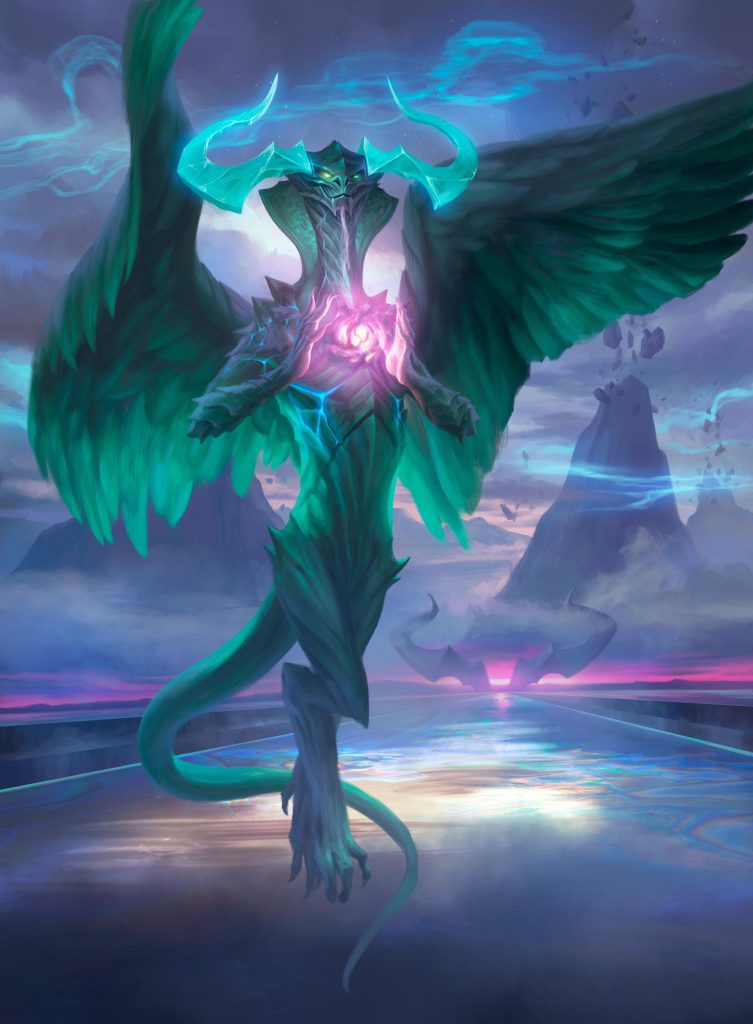
Ugin, the Ineffable | Illustration by Daarken
Competitive-wise, I can’t recommend this deck for everyone since it needs a lot of effort to play properly and most of its cards will be unplayable with the next rotation. It has the potential to become a great deck like Jeskai Fires, but you would need to change a lot.
However, you can turn it into a very competitive deck if you already have decent planeswalkers in your collection. Overall, this one demands a lot of effort, experience, and patience to play well, but it’s very rewarding if you can.
The Final Verdict on the Best MTG Challenger Deck of 2020
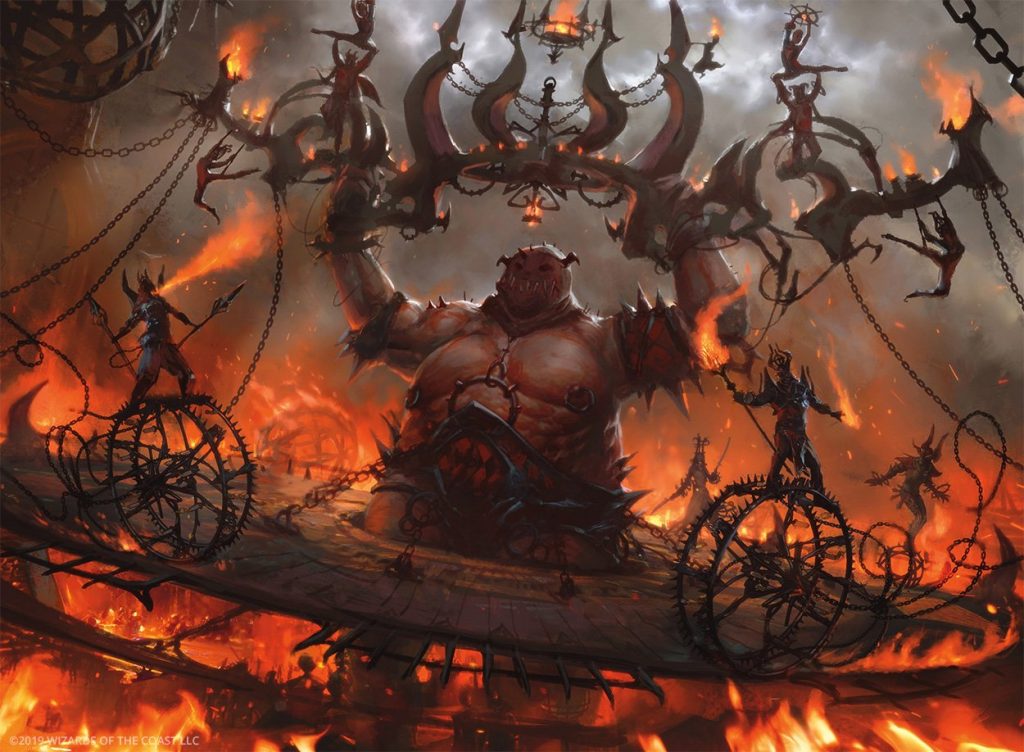
Cavalcade of Calamity | Illustration by Jonas De Ro
Purely in terms of win-rates, Cavalcade Charge has the most potential, followed by Final Adventure, Flash of Ferocity, and then Allied Fires picking up the rear.
Cavalcade Charge is also easiest to upgrade since it’s pretty straightforward. Since there probably won’t be any adventure-themed releases in the near future, Final Adventure is a risky investment and will be hard to keep relevant as new sets are released. Flash of Ferocity and Allied Fires are almost equal in terms of upgrade-ability.
Brazen Borrower and Thassa’s Intervention are great value cards, so Flash of Ferocity has an edge on that front. Kenrith, the Returned King and Fae of Wishes from Allied Fires are close, but not quite there. Coming from Cavalcade Charge, Embercleave is a must have for any solid mono red deck along with Torbran, Thane of Red Fell, while Final Adventure has Vraska, Golgari Queen and Murderous Rider, which are also great cards.
When it comes to lands, Fabled Passage, Steam Vents, and Castle Locthwain can also be played in Pioneer, so don’t ignore them.
Allied Fires will fall hard when 2020’s rotation comes around, with only 28 of its cards remaining Standard-legal. Flash of Ferocity comes after with 36 left followed by Cavalcade Charge with 44. Final Adventure will be the strongest out of next rotation with 47 cards that will remain Standard-legal for another year.
All Challenger Decks can be used in Modern and Pioneer, but Flash of Ferocity is the best option in my opinion. Unless you’re determined to use mono red while playing these formats, Cavalcade Charge won’t add much to your decks. Allied Fires has decent planeswalkers that you can combine with other decks, so it’s got that going for it. Final Adventure is better than Cavalcade Charge, but you can’t use the adventure mechanics that much if you want to combine it with earlier decks.
But let's be honest, it's very hard for any of these decks to hack it in older formats like that.
Getting a Good Deal
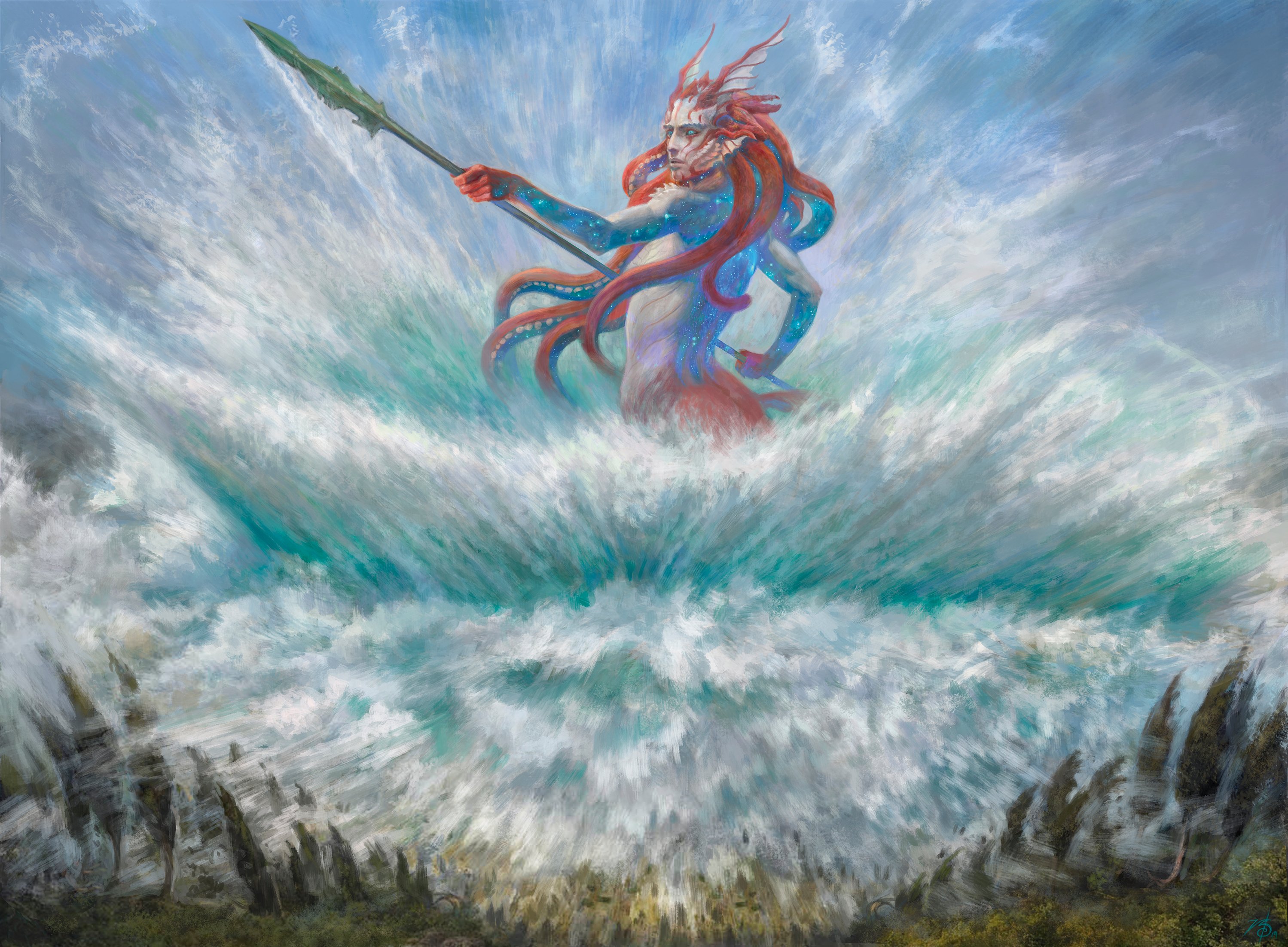
Thassa's Intervention | Illustration by Zack Stella
These decks are available via buy it now on eBay for a pretty good price:
Likewise, you can find them for a pretty similar price on Amazon:
- The brand new 2020 Challenger Decks are perfect starting points for anyone wanting to jump into events at their local game store!
- This listing includes all 4 decks: Allied Forces, Cavalcade Charge, Final Adventure, Flash of Ferocity.
- Each deck has 75 cards, including powerful rares and mythics that can be mixed into any deck.
- Release Date: April 03 2020
The Final Final Verdict

Nightpack Ambusher | Illustration by Dan Scott
MTG Challenger Decks are aimed for competitive play and designed so that players can start using them right out of the package. Although some cards will fall out of Standard in the next rotation, they’ll still maintain a good portion of their value. They’re much better than the starter decks and perform better than most Brawl decks, too.
You should also keep in mind that if you’re planning to play Modern, there is a Modern Event Deck which is likely to be a better choice. It’s not necessarily a better deck overall but is probably more suitable for Modern games. It’s a solid deck with great value if you like swarming your opponent.
Meta in MTG changes a lot, but these Challenger Decks are pretty solid and will stay solid for a while before falling off. All in all, they’re good investments if you don’t have a big collection and want to join tournaments without putting too much effort into crafting a deck from scratch or sinking big bucks into it. You can pre-order them for around $30, which is a decent price for a competitive deck. You’ll also benefit from upgrading them by adding the key cards we went over, but we’re playing MTG after all. Our pockets will never be full.
Note: this post contains affiliate links. If you use these links to make a purchase, you’ll help Draftsim continue to provide awesome free articles and apps.
Follow Draftsim for awesome articles and set updates:


Add Comment